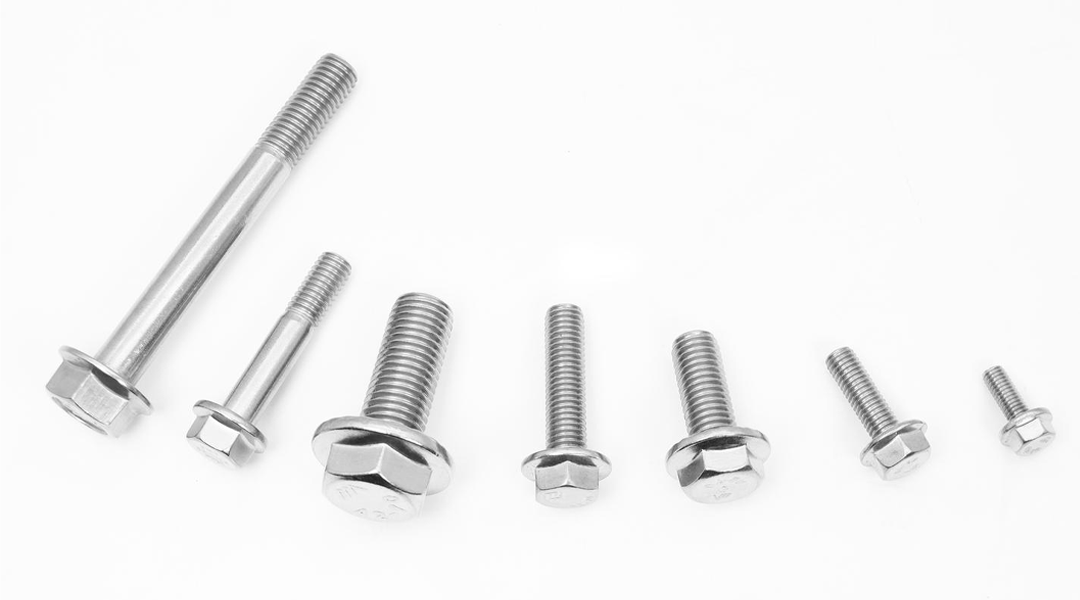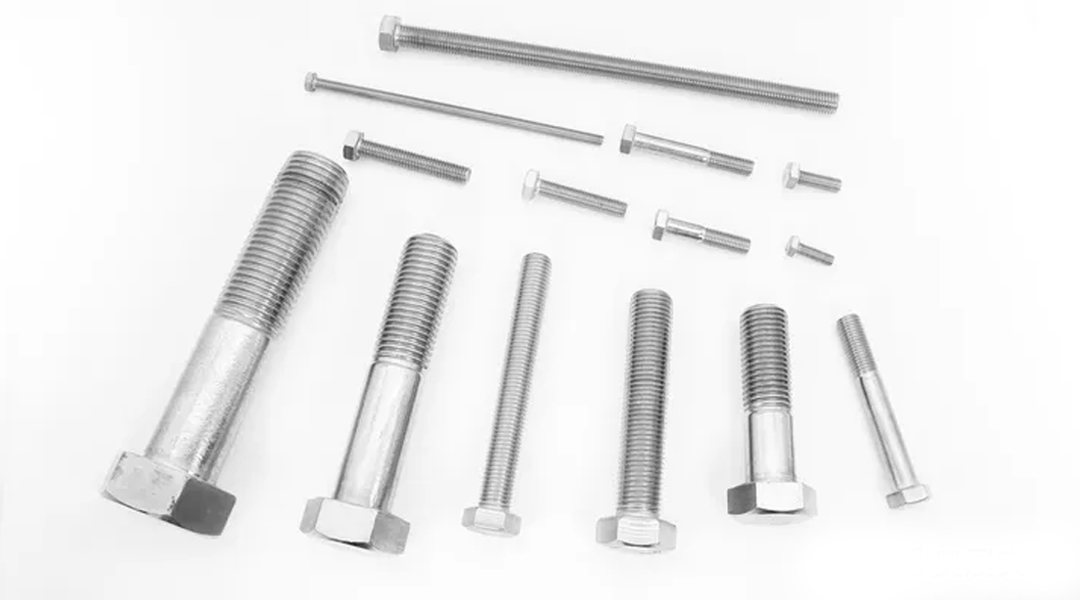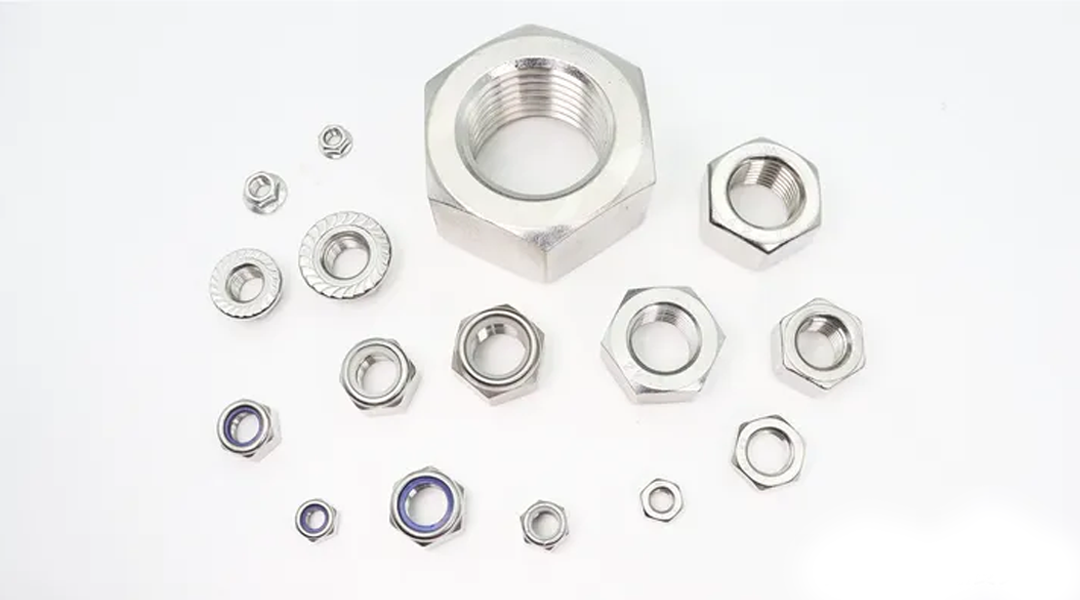

Many people do not know how to use bolts, nuts and spacers correctly. Therefore, Yunteng will introduce the use specification of bolts, nuts and spacers from the aspects of bolt connection, assembly, fastening, use position and threading.

Basic requirements for bolting
Ordinary bolts should meet the following requirements when they are used as permanent connecting bolts:
1. For general bolt connections, flat washers should be placed under the bolt head and nut to increase the pressure-bearing area.
2. Flat washers should be placed on the bolt head and nut sides respectively, and generally there should be no more than 2 flat washers placed on the bolt head side, and generally there should be no more than 1 flat washer placed on the nut side.
3. For the bolts and anchor bolts which are required by the design to be anti-loosening, anti-loosening device nuts or spring washers should be used. For bolts and anchor bolts with design requirement of anti-loosening device, nuts or spring washers should be used, and the spring washers must be set on the nut side.
4. For bolted joints with dynamic load or important parts, spring washers should be placed according to the design requirement, and the spring washers must be set on the nut side.
5. For I-beam and channel type steel, beveled joints with inclined washer should be used, so that the supporting surfaces of the head of the nuts and bolts are perpendicular to the screws.

Requirements for classification of bolt usage position
According to the l ocation and function of distribution line bolts, bolts can be divided into: electrical connection class, electrical equipment fixed class, iron accessories fixed class three. The following specifications:
1. Electrical connection: outdoor primary wiring should be hot-dip galvanized bolt connection, the bolt should have a flat washer and spring washer, bolt fastening, bolt should be exposed to 2 ~ 3 buckle. A bolt with two flat washers, a spring washer, a nut. Installation of the bolt head side to place a flat washer, nut side to place a flat washer and a spring washer, of which the spring washer against the nut.
2. Electrical equipment fixed type: transformer, distribution box base and iron accessories such as the use of channel steel beveled bolts connected to the fixed, a bolt with a nut, a beveled washer (channel steel beveled side) and a flat washer (plane 2 side with). When using the channel steel plane bolt connection fixed, a bolt with two flat washers, a spring washer, a nut. When installing the bolt head side to place a flat washer, the nut side to place a flat washer and a spring washer, where the spring washer against the nut. For the connection of disconnecting switches, dropping fuses, lightning arresters and iron accessories, use the mounting bolts provided by the equipment manufacturer in principle.
3. Fixing of iron accessories: When the bolt holes of the iron accessories are round holes, one bolt is equipped with one nut and two flat washers, and when the bolt holes of the iron accessories are long holes, one bolt is equipped with one nut and two square washers, and when installing them, the head side of the bolts and the side of the nuts are equipped with one flat washer (square) and one spring washer each. (square washer) on each side of the bolt head and nut during installation. When double-headed bolts are used for the connection of iron accessories, each end of the bolt is equipped with a nut and a flat washer (square washer). For the bolted connection on the inclined side of the flange of channel steel and I-beam, use oblique washers as much as possible, so that the support surface of the head of the nut and bolt is perpendicular to the screw.

Bolt threading requirements
1. To the three-dimensional structure: horizontal direction from inside to outside; vertical direction from down to up.
2. To the plane structure: along the line direction, double-sided components from the inside to the outside, single-sided components from the side of the feeder into or according to the unified direction; horizontal line direction, both sides from the inside to the outside, the middle from left to right (facing the side of the receiving power) or according to the unified direction; vertical direction, from down to up.
3. Transformer frame plane structure: to transformer high and low voltage Terminal as a reference direction, from the low-voltage terminal to the high-voltage terminal direction; transformer, pole as a reference direction, from the transformer side to the pole side direction (from inside to outside).
Bolt fastening requirements
The connecting bolts should be tightened one by one, and the torque of the bolts should not be less than that specified in the following table. If the threads of the screw and nut are found to have slippery teeth or the prongs of the nut are worn so that the wrench slips, the bolt and nut should be replaced.
Picture bolt tightening torque standard
bolt assembly
1. Visually inspect the bolt, nut or wire hole of the connected parts before assembly, there should be no bumping, scratching, in accordance with the drawings or the standards cited in this specification.
2. During the assembly process, the threaded part of the bolt shall not be touched.
3. The head of the bolt and the washer on the end face of the nut shall be in even contact with the plane of the parts to be fastened, and should not be tilted, or be allowed to hammer to make the two planes in contact, and the screw shall be free of bending deformation.
4. The connected parts shall be uniformly pressurized, closely fit each other, and firmly connected.
5. The use of inappropriate wrenches is strictly prohibited when bolts and nuts are fastened. Connected parts should be uniformly pressurized, closely fit each other, and firmly connected. 5, bolts, nuts tightening is strictly prohibited to use unsuitable wrenches.
6. Bolts, screws should be assembled by hand screwed into more than 2 to 3 pitches, and then tightened with wrenches or power tools.
7. Bolts, nuts assembly, pay attention to the protection of the paint film of the coupled parts, plating, and the head of the bolts, nuts, and can not be damaged.
8. After the nuts are tightened, the head of the bolt should be exposed to the end surface of the nut by 2 to 2 times, the head should be exposed to the end surface of the nut. After tightening the nut, the head of the bolt should be exposed to the end face of the nut 2 to 3 pitches, nut and washer are reverse side facing the connected body (the side of the nut marked with the word for the front, the washer rounded side for the front).
9. After the bolt is tightened, paint marking, marking the bit of the general use of red paint points in the contact between the bolt and the nut. The color can be changed according to the use of different places, but the color must be clearly distinguishable.